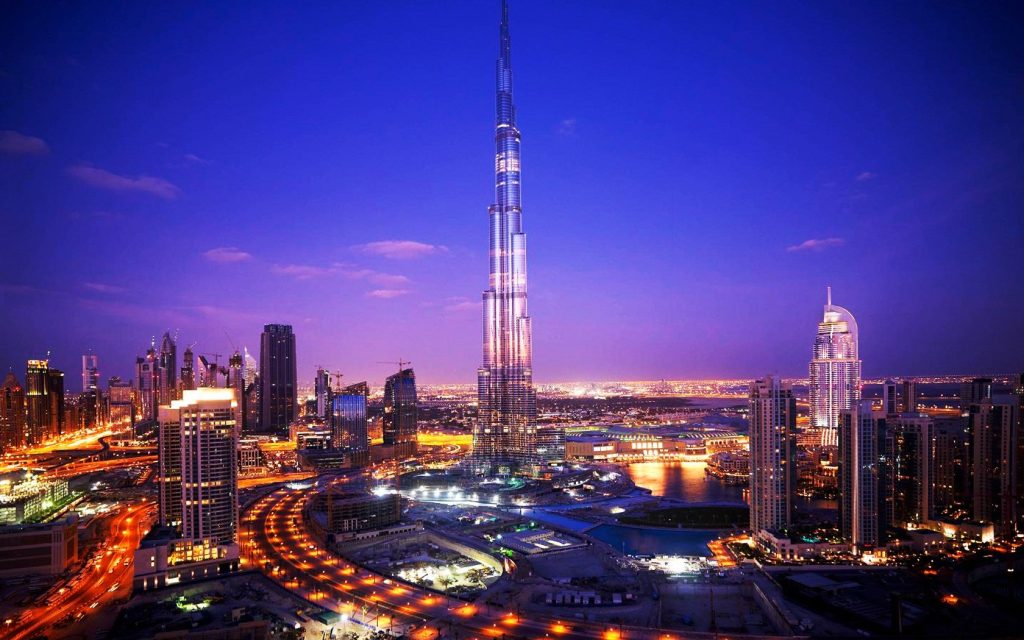Skyscrapers are striking examples of architectural mastery and symbolic signs of human achievement in the always-changing urban landscape. From the sleek and contemporary features that transform skylines to the tall spires that pierce the clouds, these iconic buildings capture our imaginations and embody the aspirational spirit of urban growth around the globe.
Every architectural masterpiece conveys a tale of inventiveness, technical prowess, and the unwavering quest for both literal and figurative heights. From the futuristic landscapes of the Middle East to the historic streets of New York City, iconic skyscrapers span countries and eras. Along the way, we’ll learn about the technical innovations, cultural influences, and design inspirations that have transformed these imposing monuments into more than just architectural representations of progress, economic might, and human brilliance.
Well-known Skyscrapers Take Around the World to never-before-seen heights and discover the stories behind the Shanghai Tower’s elegant curves, the Burj Khalifa’s piercing spire in Dubai, and the One World Trade Center’s emotional strength in New York City. Every tower, like Singapore’s Marina Bay Sands with its shimmering glass façade or the Chrysler Building with its iconic Art Deco majesty, is a testament to the creativity and vision of the architects who dared to dream large.
Significance of Skyscrapers
Skyscrapers are essential from an architectural, cultural, and economic standpoint and fundamental to the character of contemporary cities. Skyscrapers are the height of architectural creativity and success. Innovative structural systems, state-of-the-art materials, and sophisticated engineering methods are needed to design and construct tall buildings. Architects are constantly pushing the envelope of what is feasible, which results in innovative designs that grab the public’s attention.
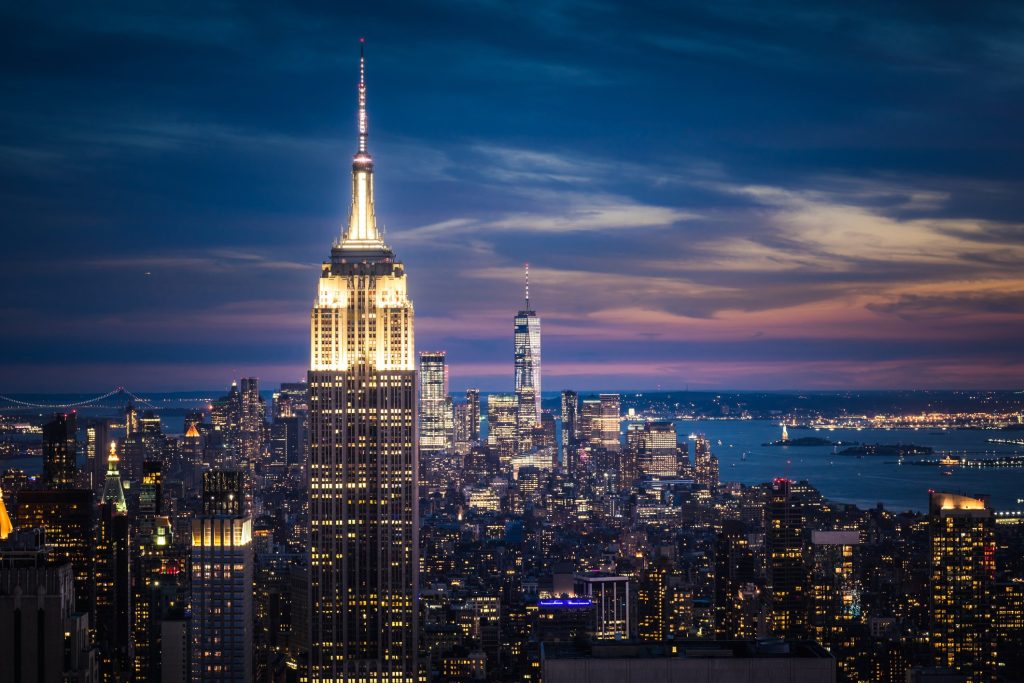
Skyscrapers frequently act as recognisable features that help to define a city’s skyline. Structures like the Petronas Towers in Kuala Lumpur and the Empire State Building in New York City come to symbolise their respective towns and add to the distinctive character of the urban environment. Building skyscrapers is typically linked to economic expansion and success. Tall building clusters that serve as corporate headquarters for multinational firms and represent the concentration of economic activity can be seen in significant financial and business areas in cities worldwide.
Vertical urbanization—the ability for cities to grow without physically expanding—is made possible by skyscrapers. Tall buildings effectively employ the limited space in densely populated metropolitan areas and help to create lively city centres. Skyscrapers are frequently used as exhibit spaces for innovative technologies. These buildings are testing grounds for the newest developments in sustainable building practices and energy-efficient building technologies.
Iconic Skyscrapers Around the World
Situated in Dubai, United Arab Emirates, the Burj Khalifa is the world’s tallest structure and a symbol of contemporary architecture across the globe. With 163 stories and an astonishing height of 828 metres (2,717 ft), the Burj Khalifa is an outstanding structure. On January 4, 2010, the Burj Khalifa was formally inaugurated. Construction on the structure started in 2004. Reflective glass, aluminium, and textured stainless steel spandrel panels cover the Burj Khalifa’s façade. The opulent Armani Hotel and apartments are among the commercial and residential sectors housed in the skyscraper.
In Dubai, United Arab Emirates, there is a posh and well-known hotel called the Burj Al Arab. The Burj Al Arab, which is famous for its unusual sail-shaped appearance, is a representation of luxury and contemporary architecture. British architect Tom Wright created the Burj Al Arab to mimic the sail of a dhow, a traditional sailing vessel from Arabia. The building stands 1,053 feet (321 metres) over the Arabian Gulf.
One of the most recognisable and enduring examples of American architecture is the Empire State Building, which is situated in the centre of New York City. During the Great Depression, work on the Empire State Building started in 1930 and was finished in 1931. The architectural firm Shreve, Lamb & Harmon was responsible for its design. The Empire State Building is well-known for its geometric patterns, setbacks, and ornamental embellishments that define the Art Deco architectural style. The structure has been essential to American history. Its building was viewed as a symbol of hope and advancement and was finished amid economic difficulty.
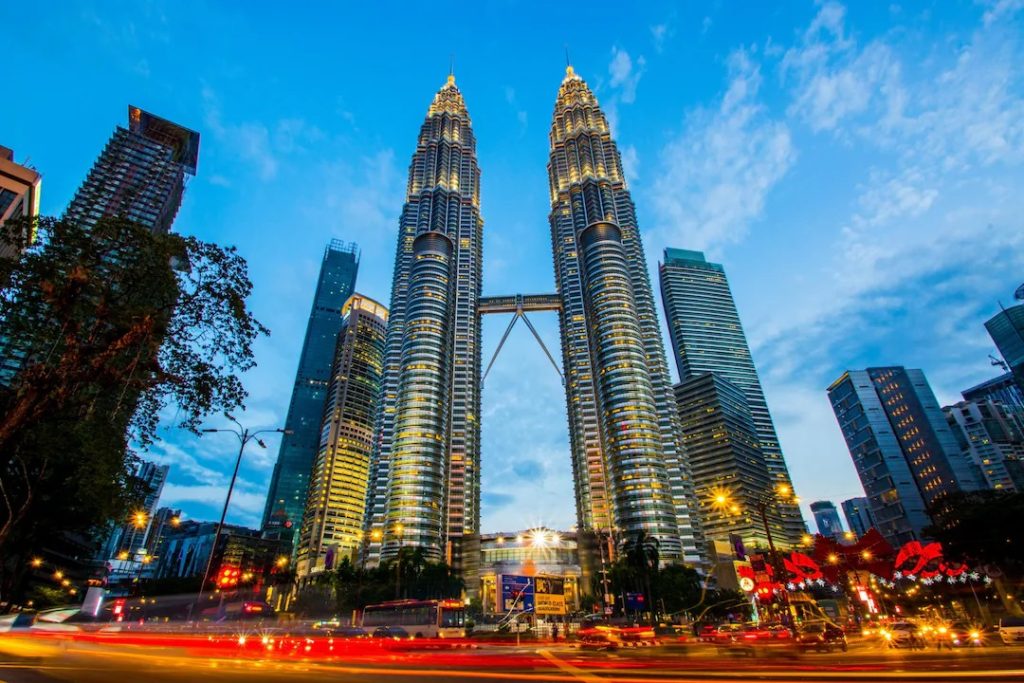
One of the world’s most famous and distinguishable buildings is the Petronas Twin Towers in Kuala Lumpur, Malaysia. 1993 saw the start of the Petronas Twin Towers’ construction, which was finished in 1998. The towers were conceived by architect Cesar Pelli and built by the Japanese architectural firm Hazama Corporation. Islamic geometric patterns are incorporated into the architecture of the structures, as evidenced by the exterior and interior details. The Petronas Twin Towers are now seen as a representation of Malaysia’s modernization and economic advancement. The towers also represent the nation’s dedication to upholding its cultural legacy and engaging in international trade.
In Shanghai, China’s Pudong district’s Lujiazui neighbourhood sits the towering Shanghai Tower. The Shanghai Tower, one of the tallest structures on Earth, is notable for its avant-garde style and environmentally friendly elements. As part of the Pudong neighbourhood, it is the tallest of the “Three Sisters,” a group of three supertall skyscrapers, including the Shanghai World Financial Center and the Jin Mao Tower.
Situated at the World Trade Center site in Lower Manhattan, New York City, One World Trade Center, sometimes called the Freedom Tower, is a prominent and symbolic skyscraper. It symbolises the nation’s resolve to recover and move on from the September 11, 2001 attacks, as well as the resiliency of the United States. One World Trade Center represents resiliency, optimism, and the power of the US economy in the face of hardship. Lower Manhattan’s standing as a thriving business and cultural neighbourhood has been enhanced by One World Trade Center’s substantial impact on the area’s economic and cultural revival.
The famous skyscraper Taipei 101, situated in Taipei, Taiwan, has come to represent contemporary Taiwan. Taipei 101’s construction was finished in 2004, after it started in 1999. C.Y. Lee & Partners designed the tower. Each of the eight parts adorns Taipei 101’s facade, which evokes bamboo shoots. Chinese culture sees Eight as lucky, while bamboo represents flexibility and strength. Taiwan’s technical and economic prosperity are symbolized by Taipei 101, which has gained cultural significance. It displays the modernization and international importance of the nation.
The Chrysler Building, a famous Art Deco skyscraper in Midtown Manhattan, New York City, represents American architecture from the 20th century. The exquisite Art Deco decoration of the Chrysler Building is well-known. Beautiful marble, ornate metalwork, and an Edward Trumbull ceiling mural are all displayed in the lobby. Its ageless and unmistakable symbolism stems from its unusual appearance and prominent spire.
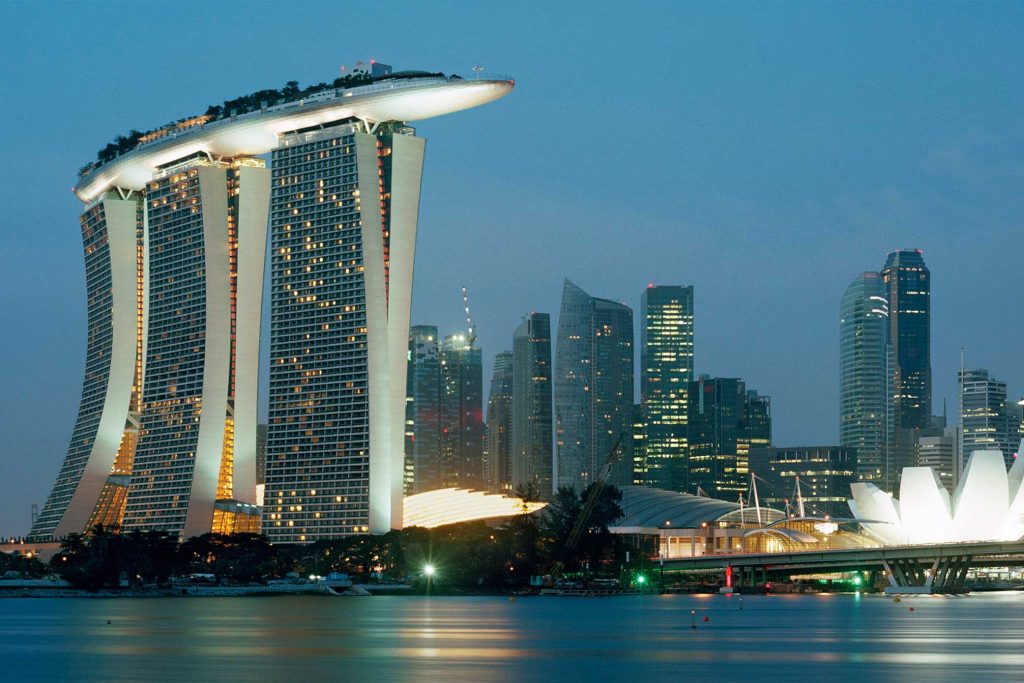
There is a well-known skyscraper called Lotte World Tower in Seoul, South Korea. The Lotte World Tower, the highest structure in the nation and among the tallest globally, is a notable icon representing South Korea’s scientific and economic might. The 118th level of Lotte World Tower has a Skywalk that lets guests take an exhilarating stroll outside the structure. Its fusion of contemporary design and traditional Korean elements captures the spirit of the nation’s inventiveness and legacy.
Singapore is home to the well-known integrated resort and hotel Marina Bay Sands. Luxurious services and unique architecture have made Marina Bay Sands a city-state symbol of modernity and luxury. A sizable sky park caps the three buildings that makeup Marina Bay Sands’ architectural structure called the Sands SkyPark. Singapore’s culture has been dramatically influenced by Marina Bay Sands, which has become an essential component of the city. It has also helped the city’s standing as a top travel and business destination worldwide.
North Korea’s capital city, Pyongyang, is home to the remarkable and unique Ryugyong Hotel. The Ryugyong Hotel has a distinctive pyramid-shaped form and has been a landmark in the city’s skyline for many years. The three wings that rise vertically and converge in the middle of the Ryugyong Hotel define its distinctive pyramidal shape.
Malmö, Sweden, has a contemporary residential tower called Turning Torso. Turning Torso, a symbol of creative urban development and an architectural wonder, is well-known for its unique twisting shape. The skyscraper contains opulent apartments and is mainly used for residential purposes. Because of the building’s shape, inhabitants can take in expansive views of the surrounding area, including Malmö and the Öresund Strait.
Kuwait City’s most recognisable tower is the Al Hamra Tower. Al Hamra Tower is one of the highest structures in Kuwait and the Middle East, renowned for its unique design and architectural significance. The tower’s sculptural shape is attributed to its staggered, curved floor plates, which combine to provide an eye-catching, dynamic front. In Kuwait, the Al Hamra Tower represents modernity and economic advancement. The country’s objectives for expansion and development are reflected in its distinctive architecture and prominent location in the skyline.
“The Gherkin,” or 30 St Mary Axe, is a unique skyscraper in the centre of London’s financial district. The Gherkin, a famously distinctive and contemporary structure, has come to represent the city’s skyline. Central Hong Kong is home to the well-known Bank of China Tower. The tower, which is famous for its eye-catching and avant-garde design, has come to represent the city’s contemporary skyline.
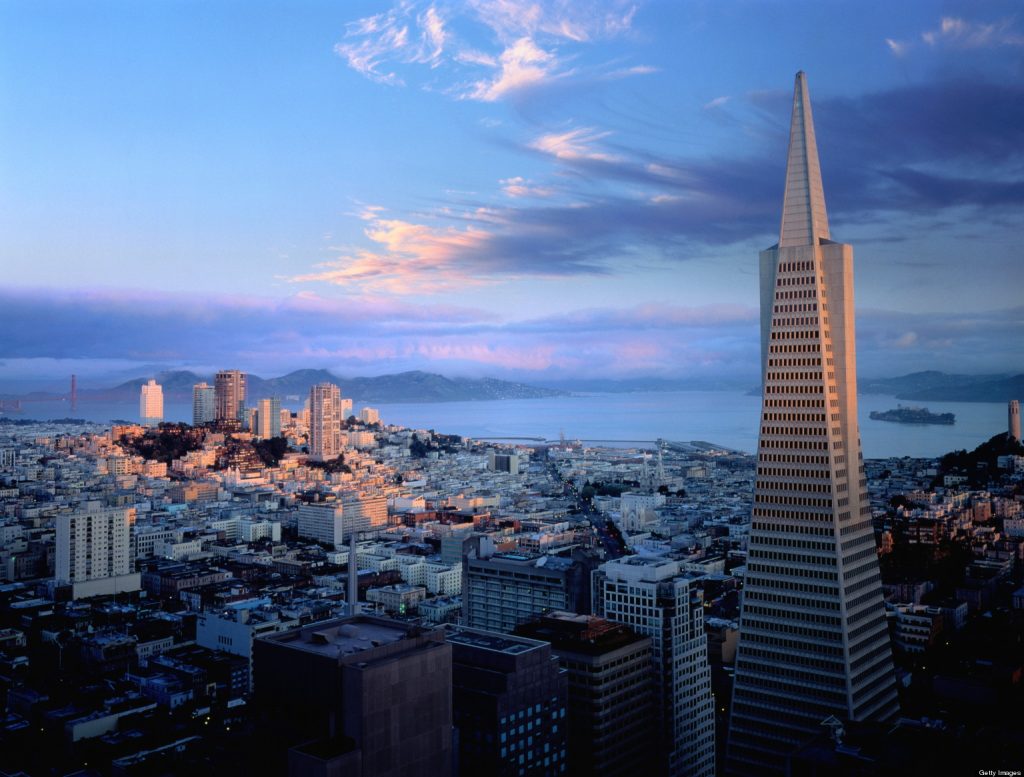
Bahrain’s capital city, Manama, is home to the well-known and cutting-edge skyscraper, the Bahrain World Trade Centre (BWTC). The Bahrain World Trade Center is a landmark that blends contemporary architecture with environmental responsibility. It is well-known for its striking design and sustainable elements. The unusual skyscraper known as the Transamerica Pyramid is situated in the financial area of San Francisco, California, USA. The building, well-known for having a distinctive pyramid shape, is now among the city’s most identifiable monuments.
Moscow City, Moscow, Russia, is home to the unique Evolution Tower skyscraper. The Evolution Tower, a well-known landmark in the Moscow International Business Center, is renowned for its inventive and twisted design. The United Arab Emirates’ capital city of Abu Dhabi is home to the famous ADNOC Headquarters skyscraper. The Abu Dhabi National Oil Business, or ADNOC for short, is a big energy company whose main office is a notable landmark in the city.
The Kingdom Centre Tower is a notable skyscraper in Saudi Arabia’s capital, Riyadh. The Kingdom Centre Tower is a prominent feature in the city’s skyline, known for its unique architecture and contemporary design. Mode In Shinjuku, Tokyo, Japan, Gakuen Cocoon Tower is an example of a standard skyscraper known for its creative, cocoon-like architecture; the tower is a learning centre for several academic institutions.

